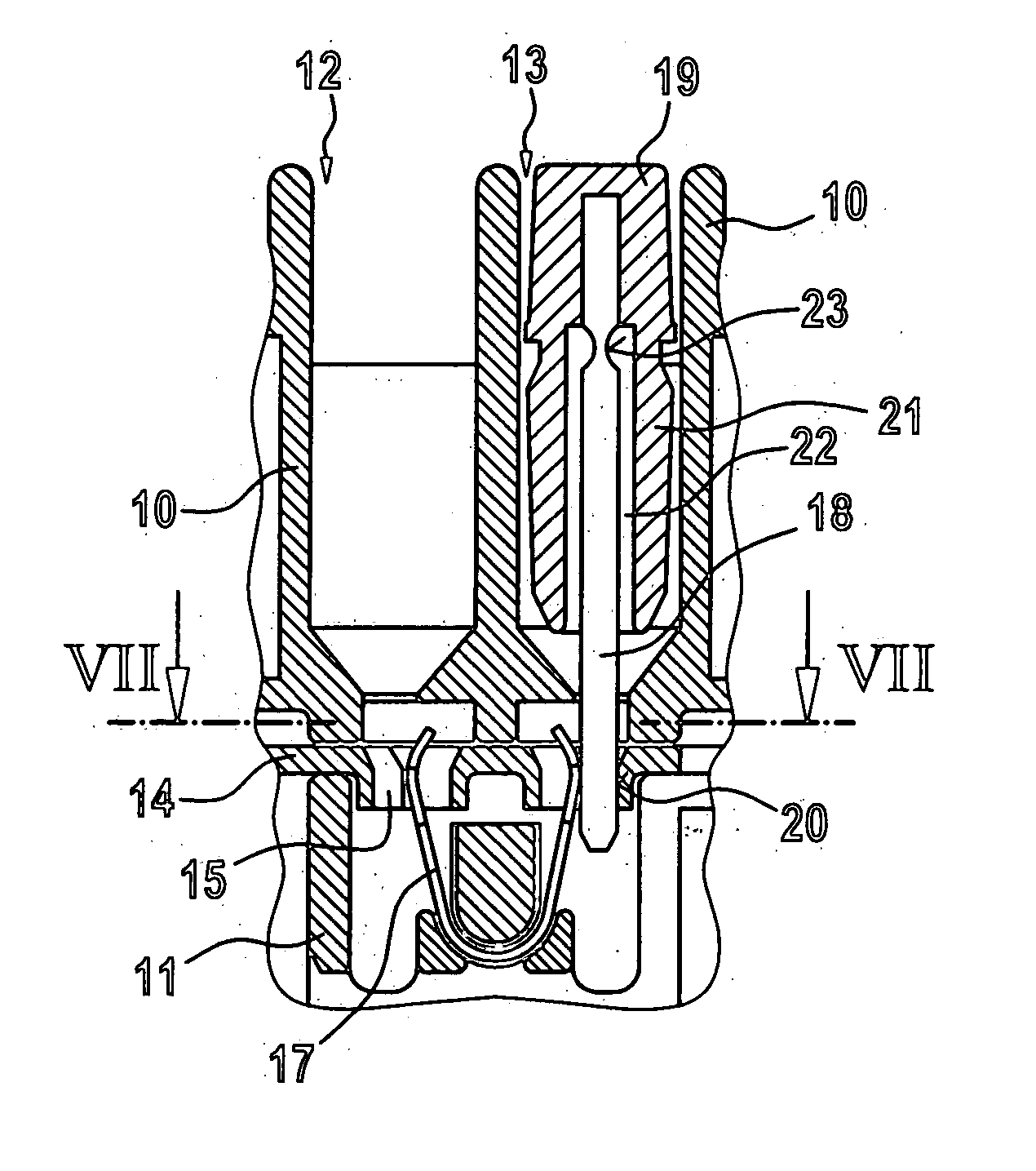Bridging member for electrical terminals
a cross-bridging member and electrical terminal technology, applied in the manufacture of contact member cases/bases, coupling device connections, electrical apparatus, etc., can solve the problems of small elastic deformation properties, and achieve the effect of improving creep and air gaps and high current intensities
- Summary
- Abstract
- Description
- Claims
- Application Information
AI Technical Summary
Benefits of technology
Problems solved by technology
Method used
Image
Examples
Embodiment Construction
[0020] The excerpt shown in FIG. 6 shows a cross section through the housing of insulation material 10, 11 of a series terminal, which has two bridging recesses of shafts 12 and 13, each of which extends in the direction perpendicular to the plane of the drawing over several series terminals arranged in a row next to each other in a row arrangement of terminals. In FIG. 6, a bridging member 19 occupies only the right bridging shaft 13; the left bridging shaft is empty.
[0021] A current bus 14 is disposed in the housing of insulating material of the series terminals and fixed in position. It possesses two connector receptacles 19 and 16 (see also for this the top view onto the current bus 14 in FIG. 7). The connector receptacles are spring-loaded by means of the spring 17 bent in U-shape. The U-shaped spring 17 is inserted pre-tensed in the connector receptacles and has the task of pressing the connecting pin 18 of the bridging member 19 plugged into the right bridging shaft 13, in a...
PUM
 Login to View More
Login to View More Abstract
Description
Claims
Application Information
 Login to View More
Login to View More - R&D
- Intellectual Property
- Life Sciences
- Materials
- Tech Scout
- Unparalleled Data Quality
- Higher Quality Content
- 60% Fewer Hallucinations
Browse by: Latest US Patents, China's latest patents, Technical Efficacy Thesaurus, Application Domain, Technology Topic, Popular Technical Reports.
© 2025 PatSnap. All rights reserved.Legal|Privacy policy|Modern Slavery Act Transparency Statement|Sitemap|About US| Contact US: help@patsnap.com


